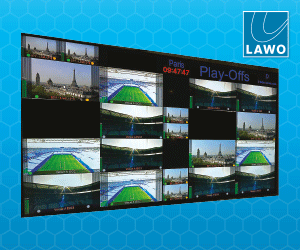With the rise in prominence of streaming services, winning share of time, mind and wallet has become critical in an increasingly crowded market. This panel explored new strategies and discussed how to market, manage and monetise content, and build a subscriber base that sticks around.
By Kalyani Gopinath
As more streamers enter the market and consumers subscribe to multiple OTT services, this panel looked at the technical and operational means to crack navigation and discoverability across services. They looked at how to take streaming to the next level.
On the panel were Danny Bates, CCO and co-founder of StarzPlay; James Walmsley, Director of Entertainment Products, Intigral; Jean-Louis Lods, VP Media Supply Chain Solutions at ATEME; Martin Webb, Senior Product Manager, Cloud TV, Comcast Technology Solutions (CTS); Nadine Samra, Chief Business Officer, Weyyak by Zee; and Rohit D’silva, Chief Business Officer, Middle East & South Africa, Viu.
Moderator Amanda Turnbull, CEO Amanda Turnbull Associates, first took the audience through an overview of the current status of streaming services in the region and how platforms are trying to stand out from the crowd.
Directing her first query at Rohit D’silva, she asked him to elaborate on his ‘staying in lane’ stance with Viu.
“The reason this space is competitive is because it is obviously the present and the future of this industry. We have experienced intense competition in Southeast Asia, where you have the big global giants on the one hand and the big Chinese players on the other. And in that space, we have found a way to be in and we enjoyed over 50m MAUs for H1 and second in terms of streaming minutes,” D’silva said, adding that remaining focused on content relevant to the space in which Viu is operating, and identifying the right kind of content, is vital.
“As this game gets more competitive, we would rather stay in lane and make sure we have as much fuel as possible, as in money, and we think being focused and delivering on that proposition is where we are best suited.”
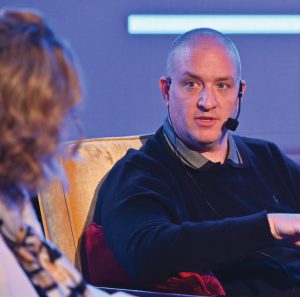 Viu offers an AVOD and SVOD model, which D’silva says is ideal for this market. “Consumers have the option of staying on in the free layer or moving up. So there’s space to grow and scale within that segment … Also, because consumption is led by a mobile device, an easy entry and easy exit is important to take streaming to the next level.”
Viu offers an AVOD and SVOD model, which D’silva says is ideal for this market. “Consumers have the option of staying on in the free layer or moving up. So there’s space to grow and scale within that segment … Also, because consumption is led by a mobile device, an easy entry and easy exit is important to take streaming to the next level.”
Nadine Samra, who heads Weyyak, an Arabic-language AVOD-SVOD service built within the Zee entertainment framework, said the platform has been going from strength to strength thanks to its Indian content. The team has built on that with investment in Arabic original productions as well as dubbing Indian content.
“The huge library of Indian content we have is our main USP. We are also investing heavily in a lot of Arabic originals; we have localised our product so that people feel like it’s their own,” she commented.
Weyyak has also acquired a lot of Arabic originals from the GCC, Syria and Egypt, and Samra added that the team has been very active on the content side, the marketing side, the telco partnership side and the advertising side.
As a vendor, Turnbull questioned how Comcast Technology Solutions was connecting the world and what was essential in order to achieve flexibility and agility for streaming services. As the CTS cloud TV solutions unites them with global brands across all segments, Martin Webb offered four recommendations.
First, you need to be where your audience is, which means being present on smart TVs, not just mobile devices.
“Ensuring functionality to target all screens in a uniform manner is essential in that time, device and place shifting won’t be barriers to content consumption” – Martin Webb, Senior Product Manager, Cloud TV, Comcast Technology Solutions (CTS)
“Our white paper, called Riding the Premium Content Wave, focused specifically on this region and showed how large-screen viewing, which made less than 20% of overall video consumption before the pandemic, grew to over 70% at the peak and even now has only fallen back to 50%. Therefore, ensuring functionality to target all screens in a uniform manner is essential in that time, device and place shifting won’t be barriers to content consumption.”
Second, we must be responsive to emerging ideas in the market, and companies must be ready from a tech and organisation point of view to adapt to those changing trends.
Third, he recommended building one-to-one relationships with consumers, urging broadcasters to create an aggregated and anonymised dataset – but most importantly be holistic, and be able to track consumer consumption across the whole catalogue. “You don’t want silos in that data.”
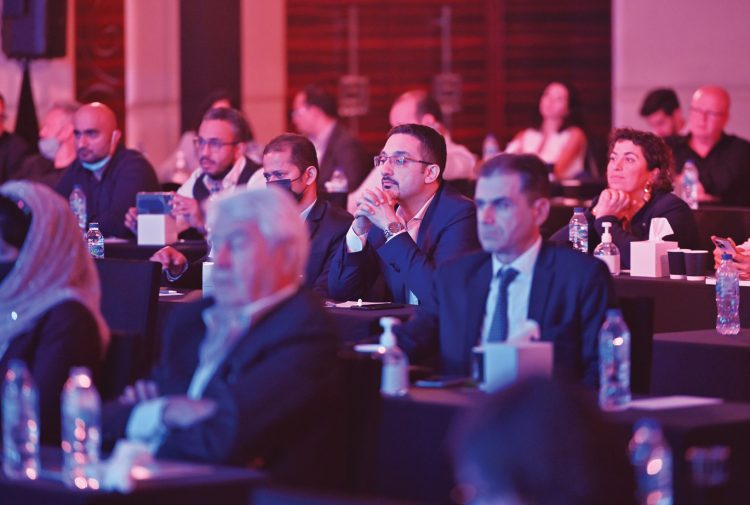 Finally, platforms must be open to adopting flexible business models. The single-tier SVOD market has moved on, and since consumers have limits to SVOD stacking, AVOD offers that beachhead to get one’s service in, he pointed out.
Finally, platforms must be open to adopting flexible business models. The single-tier SVOD market has moved on, and since consumers have limits to SVOD stacking, AVOD offers that beachhead to get one’s service in, he pointed out.
He added: “Cloud gives you that unifying point to target all these platforms in a single way. From where we see it, broadcasters and operators are on a digital transformation journey, where online becomes a core part of their overall strategy. Being in the cloud with the right kind of video platform is important in order to achieve scalability with highly concurrent events, because those platforms use micro services, although that misses out programmability. We would advocate using micro services where each service is opened up so that services are combined like interlocking bricks, allowing the video platform to adapt to your strategy rather than forcing your strategy to adapt to the video platform.”
As platforms scale, there are also some fundamentals of technology that will help create that finer viewer experience. Jean-Louis Lods stepped in to elaborate.
“At ATEME, we really work and focus on the video playing level so the end-to-end experience is important, from the football stadium through to the glass of the user experience. We focus fundamentally on how to make the video experience of the best quality for the user no matter their device, and based on that the quality of the encoding and the timely distribution of that content that quality of experience extends … so, for instance, how quickly does my service startup when I request my programming, which is coming through from the middleware from CTS. And it’s that user experience that really is always going to be so important for platforms as they scale.
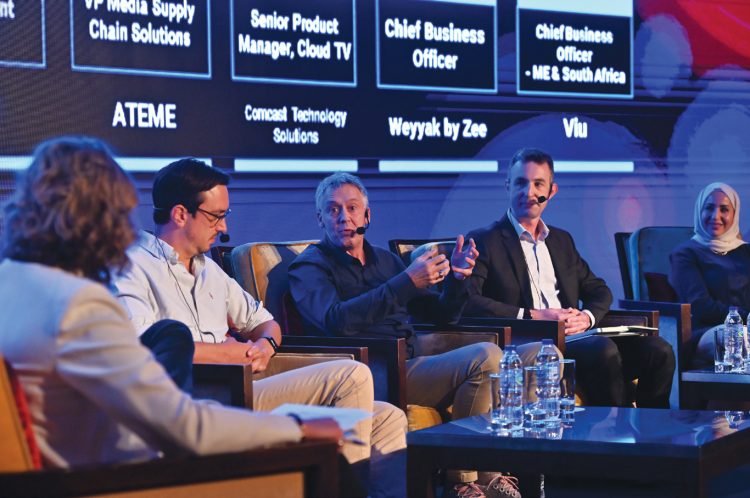
“So how does the business scale using the lowest bitrates at the highest quality so the consumer that is consuming the entertainment is having a premium experience while the network costs, the storage costs and everything associated with delivering that service is at the optimal level to enable the platform and the service content providers to really scale their business? You start dovetailing this to the other associated factors around and ask how do you deliver video to the consumer.
“We talk about sport, and latency comes into this. It’s very important: how do I not have that spoiler effect where my neighbour has experienced a goal and 10 or 20 seconds later, I see that goal appear on my screen? By offering that end-to-end experience and services of the encoding, origin and packaging of that CDN, we can enable the delivery of services which become ultra-low in latency and match the same delivery technologies as traditional DTT cable and satellite.”
Roping James Walmsley in, Turnbull asked about the idea of Intigral becoming a super aggregator and to explain his ‘own the coffee table and not necessarily the screen’ analogy.
Providing some perspective, Walmsley said that Intigral has, from the outset, “been building a product that features its own content while also showcasing content from other providers”.
“Customers are no longer choosing just a single streaming service and content providers are starting to push their own applications over content buyout agreements in some cases” – James Walmsley, Director of Entertainment Products, Intigral
“This sums up the next phase of where we want to be. We have been building out Jawwy TV to showcase content from other providers in the way they would want their content presented. We have partnered with StarzPlay for many years, amongst others, and decided to give content owners their own space on our platform rather than curate it as we see fit including ingesting the same genres, categories and promotional carousels they design for their own services. Content owners invest a lot of time and effort into curating their library so it makes sense to us to make sure that is translated to their presentation within Jawwy TV. We also have a very diverse range of customers in diverse countries, demanding a wide variety of content verticals to cater to them and necessitating a different presentation and curation strategy. Providers want to control the way they sell their content and this plays a little more into where we are going in the future because every service, us included, invest a lot of time in scheduling and curating their content whether it be Arabic, Western or Khaleeji.
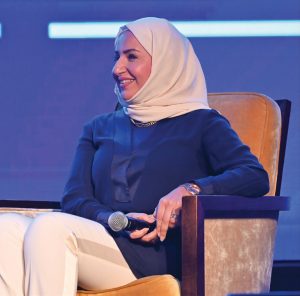 “Going forward for us, and coming back to the coffee table analogy, we will put as much focus on our content partners as we do on our own library. We realise that the market is evolving; customers are no longer choosing just a single streaming service and content providers are starting to push their own applications over content buyout agreements in some cases. Netflix set the trend in only allowing their content to be showcased by them through their native applications, but other players are moving in that direction, with Amazon Prime and Disney+ launching in this fashion. We want to be ready for this move and be in a position to offer our customers the best of both worlds. By offering customers a great baseline of our own titles, complemented by our partners’ libraries and third-party applications, we believe we can remain at the centre of the customer’s experience even when it’s not our content on the main screen. Of course, this does come with additional challenges, requiring us to think differently about how we measure success, but in the long term we believe this is the best solution we can offer to our current and prospective customer base.”
“Going forward for us, and coming back to the coffee table analogy, we will put as much focus on our content partners as we do on our own library. We realise that the market is evolving; customers are no longer choosing just a single streaming service and content providers are starting to push their own applications over content buyout agreements in some cases. Netflix set the trend in only allowing their content to be showcased by them through their native applications, but other players are moving in that direction, with Amazon Prime and Disney+ launching in this fashion. We want to be ready for this move and be in a position to offer our customers the best of both worlds. By offering customers a great baseline of our own titles, complemented by our partners’ libraries and third-party applications, we believe we can remain at the centre of the customer’s experience even when it’s not our content on the main screen. Of course, this does come with additional challenges, requiring us to think differently about how we measure success, but in the long term we believe this is the best solution we can offer to our current and prospective customer base.”
In the meantime, StarzPlay has been partnering with different content partners. Its most recent achievement has been cracking a smart way of getting sports assets on its platform.
“The great thing about sport is its organic reach. It has been a big evolution for us, the customer influx and the acquisition costs,” commented Danny Bates, highlighting a combined organic acquisition of 60-70% subscribers coming into the platform. “Our acquisition costs are one-sixth to one-seventh of the standard acquisition cost on sport. It has made a real difference to our acquisition strategy and how we onboard customers onto our platform. It is really not even about standing out from the crowd, but being part of the crowd.”
“We are also investing heavily in a lot of Arabic originals; we have localised our product so that people feel like it’s their own”- Nadine Samra, Chief Business Officer, Weyyak by Zee
Turnbull asked what that meant for content navigation and discovery.
“We are lucky that our DNA is rooted in digital marketing and performance marketing,” said D’silva. “Everyone runs their funnel differently; the beauty is that there’s no one-size formula that works. We are looking at adjacent industries that will provide us with a user base, such as influencers, who consume things in the way we are all designing products, so this space is moving faster and the good thing is there are more ways to address these issues; the only constant is the need for more money.”
Did Weyyak have a slightly different approach?
“I like to tap into the idea of being part of the crowd,” said Samra, “there’s space for us all. The MENA and the Arabic audience can consume multiple OTT services. So out of the eight or six hours that a user spends, if we find half an hour or one hour, we are happy; if we can achieve that, we’re successful.”
A creative and experimental attitude has played a predominant role in the Weyyak strategy. “We have adopted a ‘why don’t we try this out’ approach,” commented Samra. “If things don’t work for us, we move on, we learn.”
Walmsley agreed with Samra about space for multiple people at different times in a customer’s journey. “In terms of content discovery, the challenge will be a metadata one, but the breadth of content is expanding, technology is also improving, and as we move through the next few years, things will get better.”
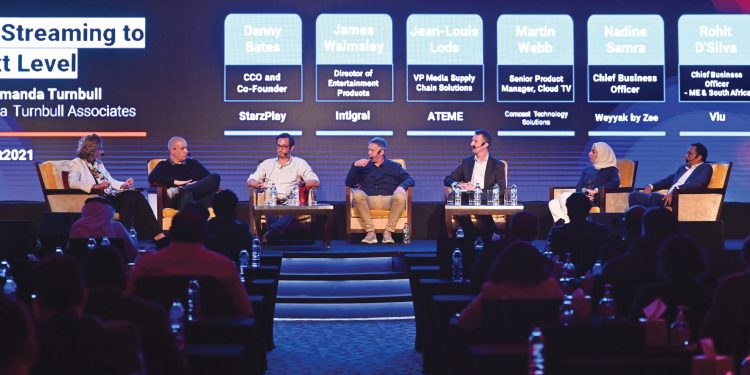
Creative level changes are taking place in content delivery too, altering viewer features and delivering whole new experiences, Lods highlighted.
“We have a thing called film grain synthesis, which takes the noise or the film grain that was captured and put on purpose by the director, that is often not seen by the consumer. We can now synthesise that film grain and reproduce at player level while saving enormously on bandwidth, almost 90%. So delivering the experience to the consumer which is as real as what was endeavoured by the director becomes vitally important about how you differentiate your content and give it a feel of ownership to the actual user.”
With all the different content, segmentation and audiences, how are channels bringing content to the fore?
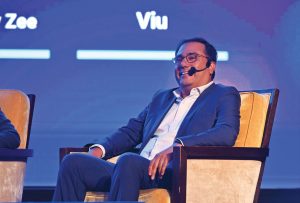
Bates pointed out that what was once about acquisition marketing has now evolved into content discovery experience and communication with the customer, curating services, surfacing technology, recommendation engines and so on. “It is really about acquisition, getting those big shows, bringing people on; second, giving them something new to stay in; and thirdly, the win-back cycle. Give customers a good experience as they leave, so that they come back.”
James countered that while sports in itself is a big draw, providing content and value between actual consumption is crucial to getting subscribers to return. “Retaining that base or bringing them back will be the next big challenge.”
Picking on from Walmsley’s point about metadata, Webb stressed the need for quality and completeness of metadata, but also highlighted the key element of consistency. “We see situations where fragmentation in how video services are implemented lead to a number of different metadata databases, which can lead to consumer confusion in the content discovery process. So quality is important, but I would like to see consistency too.”
Closing, Turnbull asked D’silva if having a ‘good departure’, as Bates had phrased it, chimed with his views.
“I have a different perspective on sports. While what the StarzPlay team is doing is fantastic in trying to find new ways to engage with sport, the cost of sports rights makes it difficult to make it work on OTT. Sport can give outsized returns, but you also need an outsized bet. Having said that, like the rest of the streaming services, things will evolve and hopefully sports streaming will become viable in the future.” The discussion ended with how sports services are getting increasingly more pragmatic and how sharing rights costs and partnering with telcos could help build those “outsized” bets to reach wider regions and larger audience bases.


